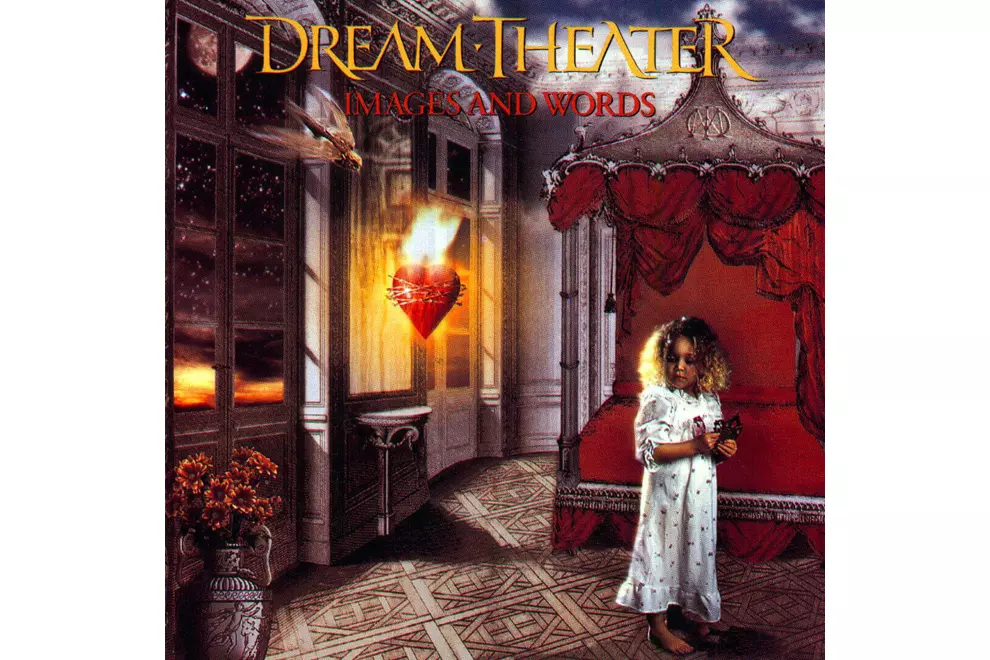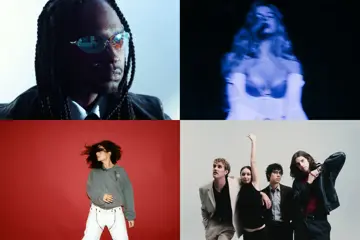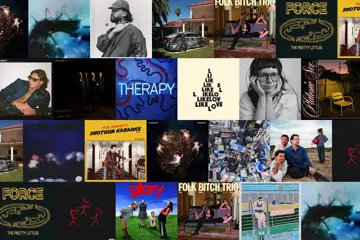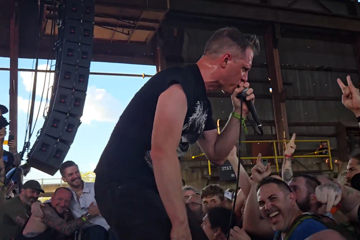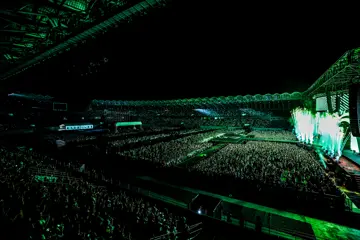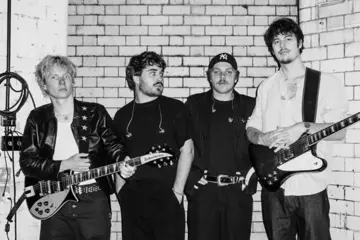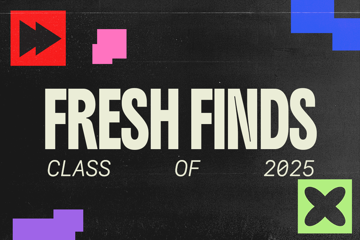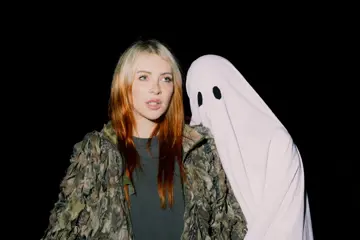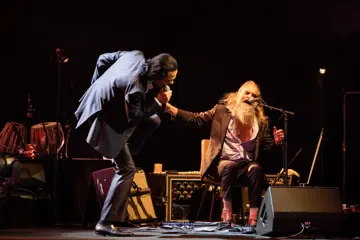A reflection on one of my personal favourite albums, Dream Theater's 'Images and Words', 27 years on from release.
When I first made the transition to ‘older’ metal, I was 13 and binged on a diet of Iron Maiden, Judas Priest and Metallica. To me, metal was about being loud, fast and aggressive. If it didn’t have a solo, it wasn’t worth listening to in my mind. (This was a silly attitude that sent me down a terrible two-year denial of the legitimacy of ‘core’ music.) It was with this mindset that I conversed with a family friend about my music tastes, to which he promptly shoved a copy of Dream Theater’s 2006 epic, 'Octavarium', into my ignorant hands, with the promise that it'd make me re-think my stance on Kirk Hammett being the authority on heavy fret-work.
Songs like the groovy 'Root Of All Evil', the furious 'Panic Attack', and the Pink Floyd-esque opus of the 25-minute title track challenged my perceptions on songwriting limits and musical ability. From the blistering dual-guitar and keyboard solos dished out by John Petrucci and Jordan Rudess, to the rhythmical abilities of bassist John Myung and former drummer Mike Portnoy, I was completely captivated by the musical journey this band took me on with each song. Being one of the heavier records in the band's catalogue, everything about the sounds exhibited appealed to my musical senses back then. So, I set out to purchase one of their LP’s for myself, a certain trip that led me to buy 'Images and Words', an investment that would shift my outlook on music.
[caption id="attachment_1106492" align="aligncenter" width="760"] Dream Theater, 2019. [/caption]
Dream Theater, 2019. [/caption]
Having been indoctrinated into thrash metal before further exploring other styles, any sense of a song being ‘radio friendly’ was an instant red-flag for commercialism and selling out. (Idiotic, I know). Yet by that logic, album opener 'Pull Me Under' should have lost me pretty damn quickly. However, from the opening harmonics of Petrucci's guitar to the crushing distortion when the main riff kicks in, 'Images & Words' grabs you by the throat from the first few seconds. The instrumentation of the intro to 'Pull Me Under' would suggest that Dream Theatre is just another run-of-the-mill metal band desperate to compete with the grunge take-over, but then the voice of (then) new frontman James LaBrie ring out; "Dust fills my eyes, clouds roll out and I roll with them." There’s an anxiety to these words, the thoughts of a band who spent their first five-years flailing in obscurity despite their musical prowess; churning through a long list of singers and running into countless roadblocks, desperate for a chance to make some kind of impact.
Much of what Dream Theater are today can be directly attributed to the success of 'Pull Me Under', with the song gaining high rotation on MTV back in the day, arriving in the global charts alongside the likes of Nirvana and Smashing Pumpkins. Such was it's power on the regular radio, it inspired countless teenagers to strive for greater musical excellence in their own musical pursuits.
'Pull Me Under' was my first introduction to progressive metal and my first listen was a series of mind blowing events,” says TesseracT guitarist, James Monteith.
“I initially fell in love with the lush clean guitar intro and then the super crushing opening riff, but then the song structure and development was like nothing I’ve heard before. It’s so detailed, intricate, and very much a journey.”
The smash-success of the track was such a dramatic turn of events that even the band themselves were caught off-guard.
“We came out with this stuff that didn’t have the normal pop structure, the songs were long. 'Pull Me Under” was at least eight minutes”, stated guitarist John Petrucci. “We had no idea what was happening. We had to quickly film a video on tour at a club because we didn’t have a video and it just grew from there. It was unintentional.”
The song may have broken into the mainstream, fanning the fledgling embers heard on 1989's When Dream & Day Unite to a full-blown flame, but at the time of writing and recording, there was no expectation it'd lead to a worldwide audience. Such was the creative freedom that gave the band the confidence to place the 80’s power ballad of Another Day and the funky, progressive roller coaster of Take The Time back-to-back at the head of the record. The former still stands up as one of the most abrupt curve balls in the linear order of a record, with the heavy riffage of the previous opener giving way to the uplifting piano and aching saxophone, courtesy of Jay Beckenstein, the owner of Beartracks Studios where the record was produced.
“You won’t find it here, so look the other way. You won’t find it here, so die another day” croons LaBrie, bringing Petrucci's words about his father’s terminal illness to life, displaying the maturity and thoughtfulness that makes up much of this band’s lyrical work. Parts of the song sound like they could make up the soundtrack for The Bold & The Beautiful, but the final triumphant chorus and guitar solo is anything but cheesy; the first of many emotional moments found throughout.
This ability of Dream Theater to evoke real emotion through their music is captured beautifully with this LP's myriad of different moods; thoughts and questions about the world channelled into a blissful hour of prog. The aforementioned Take The Time embodies the youthful energy that existed within a band throwing caution to the very wind creatively. It's the first real song to showcase their technical prowess: the guitar/keys solo in the middle being impossible to not grin manically due to the sheer joy exhibited through the playing, and the transition back to what is arguably the band’s best chorus is a stroke of genius.
If Take The Time was the band firing off their progressive canisters, Under A Glass Moon is foot-to-the-floor heavy metal, sowing the seeds that would eventually bloom with the heaviness of Train Of Thought some 13 years later. The song's opening fanfare drips with malicious intent before Myung and Portnoy bring in that semi-quaver groove that hits with the power of Metallica’s 'One'. At six-minutes long, it’s one of the more concise heavy cuts from the band's entire catalogue, but it still goes to great lengths to exhibit the musical might of early Dream Theater.
“Under a glass moon is one of my all-time favourite guitar solos,” says Otto Van-Wicks of Sydney post-rock outfit, Sleepmakeswaves.
“So memorable and funky and weird. I’ve been trying to learn it for about two years and it’s become my white whale.”
Speaking on his tones, Petrucci notes that his sound is a result of listening to heaps of Rush and Metallica.
"I dial in this heavy Metallica crunch, which I’ve always used Mesa/Boogie amps to get… it’s a very thick sound", he's since mentioned.
The Metallica influence is certainly noticeable on Under A Glass Moon, with the track serving as the album's showpiece headbanger. But whilst the band use the song to flex their muscles, the shift in mood on the following piano-based Wait For Sleep is astounding. From determined aggression to tender heartbreak, the juxtaposition of the two is evidence of the diverse range of sounds and moods the band were feeling. Whilst the power-pop of Surrounded suggests total optimism and clarity of thought, Wait For Sleep is the beginning signs of a gradual maturation and resulting uncertainty of a constantly active mind.
“She stares at the ceiling and tries not to think, and pictures the chain she’s trying to link again” whispers LaBrie, delivering his lines with haunting unease. While Wait For Sleep is the beginnings of questioning the constructed reality in which we live, Learning To Live is the acceptance and resolution to see life through to completion, regardless of one’s personal plans and aspirations.
The longest track at a modest 11 minutes (for Dream Theater), Learning To Live is the first of their many ‘epics’ to be recorded in CD format. And a 25-year debate has raged ever since on which claims the title for the best. Whilst Learning To Live might not live up to the theatrics of Octavarium or the drama of Six Degrees Of Inner Turbulence, there’s a disarming amount of prophetic statements and thoughtfulness found. Proceeding the works of both Porcupine Tree and Tool, Learning To Live carefully navigates through the feelings of disappointment, optimism and acceptance that each of us encounters as our lives take shape. From 80’s pop to Rush-inspired 15/8 grooves, to Spanish flamencos and eventually ending with a magnificent solo and ominous outro that leaves Images & Words on a cliff-hanger, one could make the case that Learning To Live is one of the greatest prog songs ever written. With Myung taking up the lyrical pen, the song reflects on those mental breakthroughs that help us get up in the morning;
“Another chance to lift my life, Free the sensation within my heart, to ride the wings of dreams into changing horizons.”
At the time of writing, Dream Theater had experienced the gain and loss of a record label. feeling the seemingly fleeting grasp of success only to have it stripped away by the fledgling promises of their then label.
“We weren’t really crazy about the label, so we were singerless, label-less, and holding jobs down teaching guitar and doing other things. We started to wonder if we would have an opportunity to do this again as a band,” says Petrucci.
“We didn’t even think it was going to amount to anything, we were just incredibly grateful to be back in the studio.”
These feelings of disappointment and renewed hope, resulting in an eventual uneasy step forward into life’s unknowns serve as the makeup for both the song and the record, with the band writing these tales from a place of both optimism and unease. It was the willingness to take this creative risk that led to the composition of the record's centrepiece, the song which for Dream Theater die-hards serves as the prologue and capstone of the band's spirit.
[caption id="attachment_1106938" align="aligncenter" width="760"] Dream Theater, circa 1992.[/caption]
Dream Theater, circa 1992.[/caption]
If we fast forward to 1997, we find Dream Theater again at odds with their label, fans and sound, following the micromanaged commercial disaster yet still musically interesting 'Falling Into Infinity. With the fate of the band again at stake and a fresh plate to try and resurrect the monster that they had caught a glimpse of back in 1992, they went back to a story that began and formed the last piece of our puzzle on Image and Words. The resulting record, recorded in the same studio as this 1992 epic, was 1999's Metropolis Part 2: Scenes From A Memory, a magnum opus that kicked off the golden age of Dream Theater and a stream of story-driven albums that wouldn't end until Octavarium.
As a concept record, Scenes From A Memory sits above all others. It ties both thematic and musical motifs with pure ease, producing one of the most mysterious and exciting metal albums of all time. Musically, however, the entire album can be found in the furious riffs and mind-bending technicalities of its predecessor Metropolis Part 1: The Miracle & The Sleeper, which arrived in the middle section of Images and Words, dispelling any doubt to the band's technical proficiency and conceptual creativity. Starting the story of love and murder that would be explored three albums later, Metropolis Part 2 begins with an instantly recognisable call-to-arms on the keys before descending into a thunderous march of pounding drums and soaring vocals.
As their career wore on there'd be countless other extended instrumental movements of mind-blowing technicality, notably in future cuts like The Glass Prison and This Dying Soul. However, Metropolis was the first time Dream Theater nailed it in a way that wasn’t tokenism, but rather a natural progression of their music itself. It was songwriting taken to the extreme, and it was fucking exciting. I myself would come home from high-school and play through all manner of progressive tunes on my old Pearl Forum drum kit, but it was Metropolis that I would always come back to, the uplifting melodies and bone-crushing instrumentation both inspiring and humbling me at my own craft. The song never seems to resolve in a way that gives closure, so it seems only fitting that the band should revisit it in such a grand sequel seven years later. Dream Theater were always brilliant, and Metropolis showed that in addition to being masterful musicians, they were real story-tellers too.
With most records passing their 25-year anniversary and racking up more milestones as the years go by, looking back at how far ahead of its time this record was, and how the seeds it sowed developed into something beautiful later on, is so impressive. Images And Words still stands up today as a musical work of emotion and ambition that is matched only by the very same band's own future releases. Prog is a genre that houses works of particular intensity, from musical incarnations of Moby Dick to instrumental epics that conjure images of harsh and icy tundras and endless desert plains, but it’s difficult to find a band who match natural songwriting and technical excellence with the ease and sensitivity of Dream Theater. Images and Words acting as the first time they fully showcased such an ability to the world. Seeing this album performed live a couple years back was a HUGE trip down memory lane, as well as a therapeutic reflection on my own personal dreams and how I’ve accepted the reality of how they have since played out.
As Myung writes, “The 90’s brings new questions, new solutions to be found. I fell in love to be let down.”
I and so many other people discovered and fell in love with this music, birthing ambitions and dreams through the lens of Images and Words. As life happens, things don’t always go to plan. Sometimes they fall short of our expectations, an event which can be particularly heartbreaking. However, sometimes they can evolve into a thing of beauty and wonder, just as Images and Words was, and still is to this day.
“Find all you need in your mind if you take the time.”


